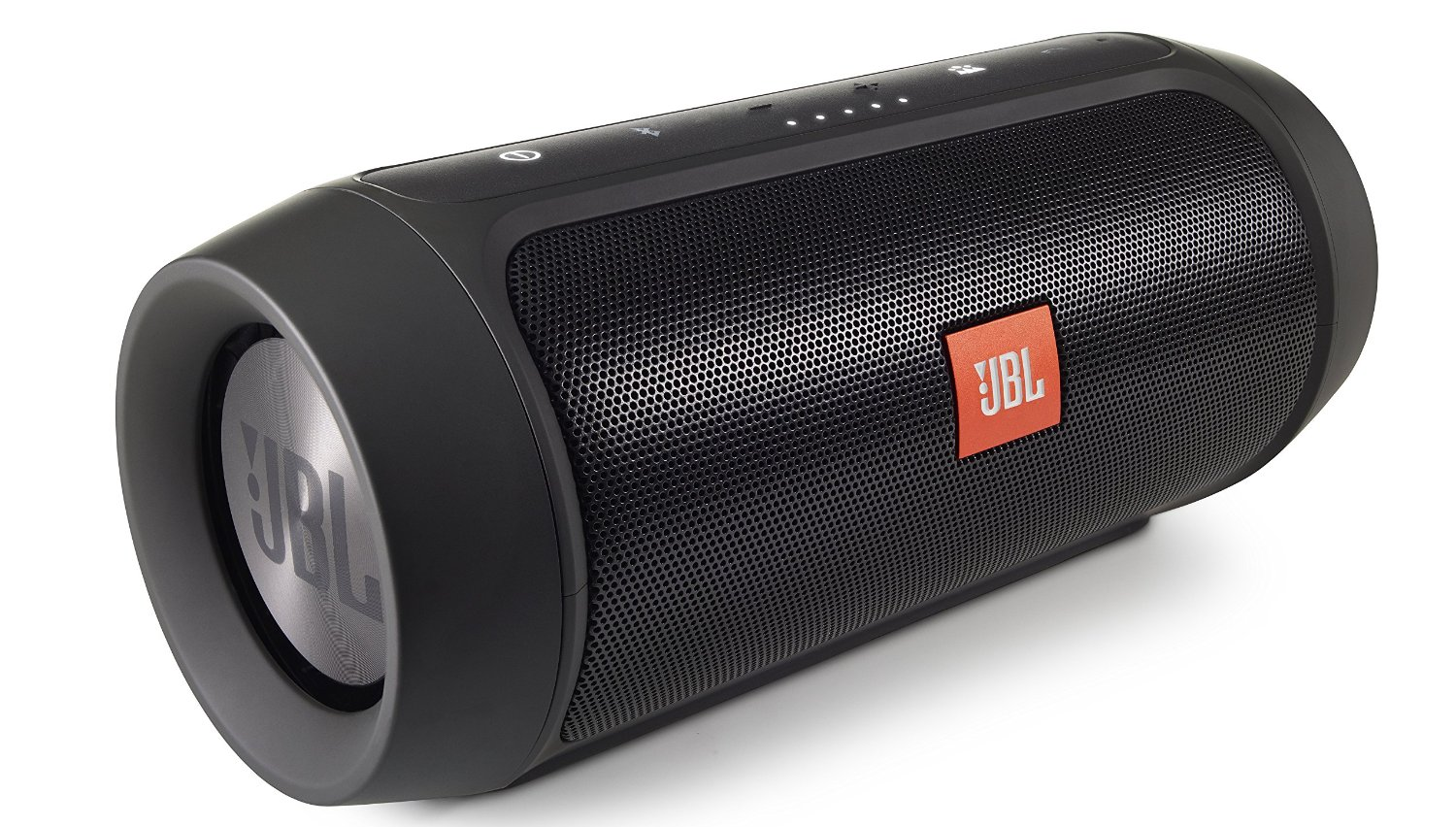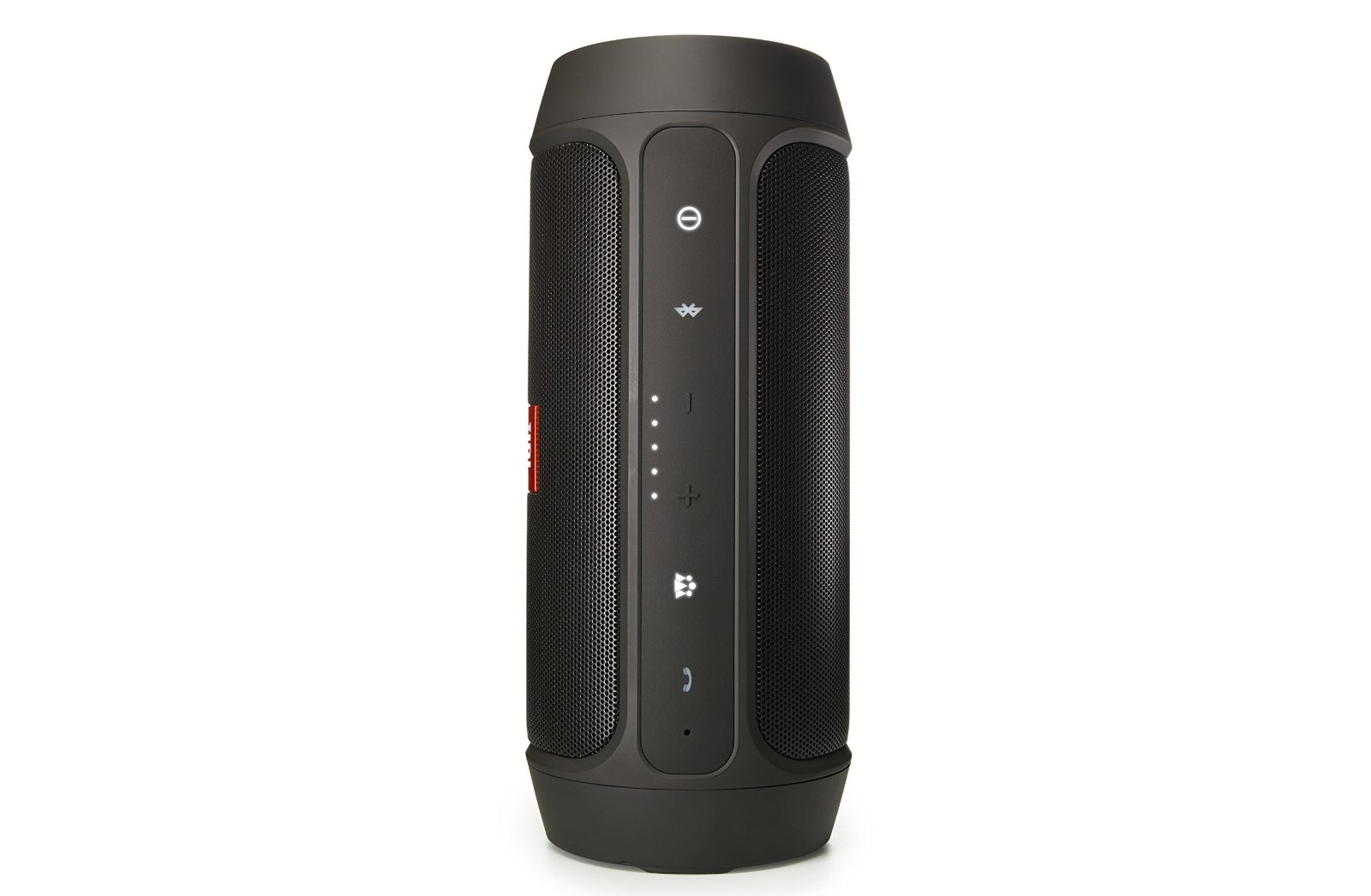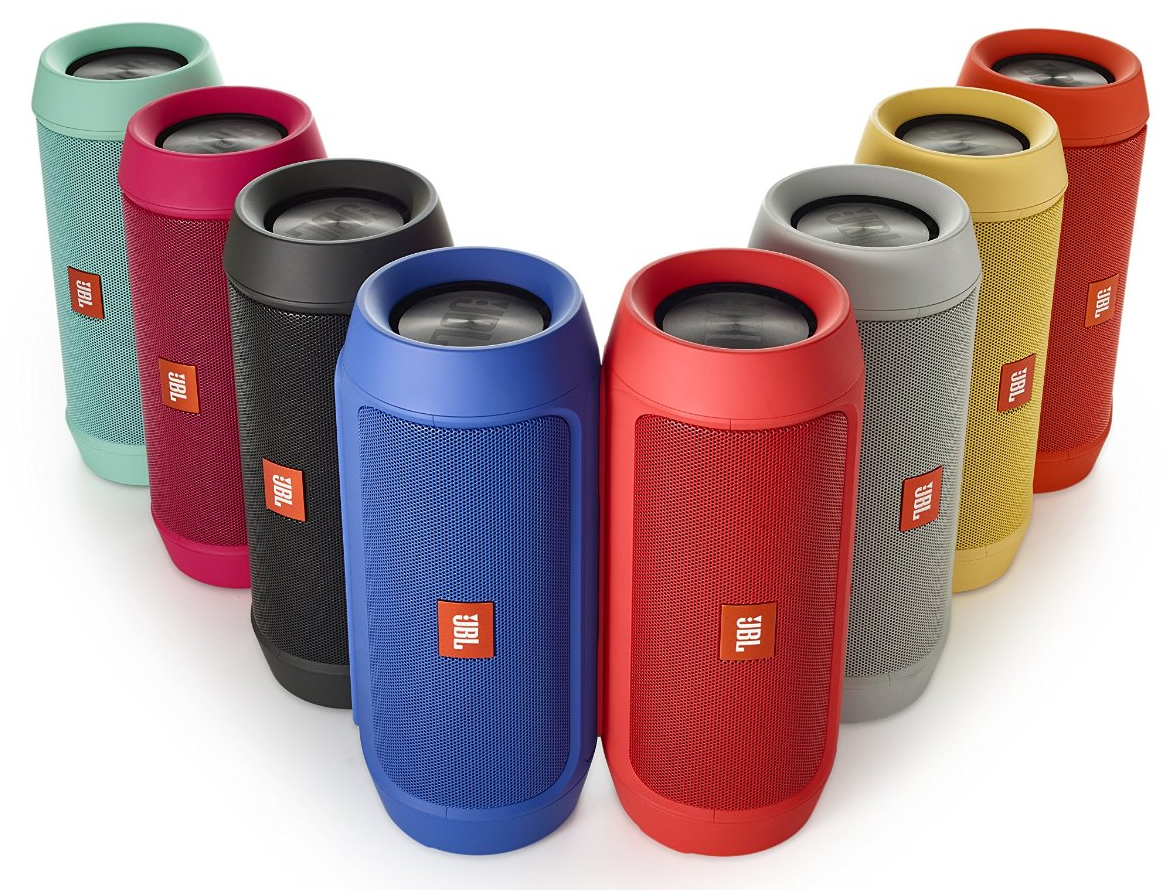Tom's Guide Verdict
JBL's latest version of the Charge adds water resistance and offers better sound, making an affordable portable speaker even better.
Pros
- +
Rich bass
- +
Splash proof
- +
Reasonable price
Cons
- -
Average battery life
- -
No mobile app
Why you can trust Tom's Guide
In 2013, JBL's Charge got in on the beginning of the Bluetooth speaker boom and delivered good sound at a reasonable price. Last year, JBL updated the model with the Charge 2, improving the audio quality and adding a speakerphone option. The speaker continues to improve bit by bit with the Charge 2+, which makes the device splash proof, adds more color choices and tweaks the sound. For $150, you won't find a more versatile Bluetooth speaker — or one with more bass.
Design

The Charge 2+ features only minor changes to the look of the speaker. At 7.3 x 3.1 inches, the 2+ is just a bit longer than the Charge 2, and also weighs 1.4 ounces more, at 21 ounces — but I didn't notice the difference when I held the new unit. By comparison, the 2+ is slightly larger and heavier than the 7.1 x 2.6-inch, 19-ounce UE Boom.
The 2+ offers more colors than the 2. I tested a blue model, but the latest version also comes in black, gray, orange, pink, red, green and yellow.
The latest Charge adds some water resistance, a welcome improvement. It's rated IPX4, which means it can handle a splash of water, but shouldn't be submerged (the UE Boom has the same rating). Still, that brings some peace of mind while listening near the pool or if you're camping and it starts raining.
Inside, JBL put two 45mm drivers for midrange and treble tones, with two passive bass radiators that cap the ends of the tubular case. You can see and feel the radiators reverberate as the music plays.
MORE: Our Favorite Outdoor (Waterproof) Speakers
On top are the power, Bluetooth pairing and volume buttons, along with a button to enable Social Mode, which allows up to three devices to be connected to the speaker at once. Pressing the button makes it easy to change which person is in control of the tunes. You can also answer and end calls with the speakerphone button.
Just below the volume buttons is a battery indicator that shows the power level. It's divided into five segments, so you have a good idea of how much battery life you have left.
The back features a microUSB port for recharging the battery, a USB port for charging other mobile devices and a 3.5mm auxiliary input for wired connections.
Setup
I paired the Charge 2+ easily with iOS and Android devices. In your mobile device's Bluetooth settings menu, you simply need to look for "JBL Charge 2+" when pairing. This JBL doesn't come with NFC for quick pairing with Android units, however.
I found that the speaker maintained a strong wireless connection at more than 25 feet, even with walls between the music source and the speaker.
The Charge 2+ doesn't have any tone controls, and JBL doesn't offer a mobile app for tweaking any settings. Any adjustments will need to be made on the music playback side of the sound equation.
Performance

The Charge 2 represented a big jump in sound quality over the Charge, with bigger bass and crisper treble. The Charge 2+ refines that sound and provides better overall balance; the previous generation had too much bass in some cases, overwhelming the mix.
On Mark Ronson's "Uptown Funk," the bass thumped with authority, stronger than on the more expensive $200 UE Boom, though the Boom handled the crisp horns better. The kick drum on Florence + the Machine's "What Kind of Man" drove the rhythm with intensity that matched Florence Welch's vocals, and delivered a much fuller experience than the UE Boom.
MORE: Best Bluetooth Speakers for Home or On-the-Go
The bass boost also helped when listening to acoustic music. Miles Davis' muted trumpet sounded crisp on "Summertime," and the string instruments resonated richly on Beethoven's Symphony No. 4 in B Flat Major by Joshua Bell.
The Charge 2+ can crank for a small speaker. I measured peak volume at 95 decibels — most portable Bluetooth speakers top out at 90 — and it didn't sound significantly distorted until I reached about 90 decibels.
Speakerphone
The speakerphone on the Charge 2+ is average at best. People I spoke to said the microphone was about equal in quality to the iPhone's built-in unit. However, on my end of the call, I had to turn up the volume considerably to hear the people on the other end of the line, which also meant I had to remember to turn it down after the call so I wouldn't get a shock the next time I played music.
Battery Life
JBL says you can play the Charge 2+ for 12 hours, the same as the Charge and Charge 2. I found that to be accurate in my testing. While that endurance was impressive when the first Charge was released in 2013, many Bluetooth speakers surpass it now. The Fugoo Style is rated for 40 hours of battery life.
As the name implies, the Charge 2+ also acts as an external battery and can power tablets and phones via USB. With its 6,000-mAh battery, you should have enough juice to fully recharge an iPhone 6 battery more than three times before the speaker runs out of charge. Of course, the power you use to charge external devices reduces the amount of playback time you'll get.
Bottom Line
The Charge 2+ offers everything you need in a portable Bluetooth speaker, and delivers sound that bests more expensive models. Not all the features work well; if speakerphone is important, the UE Boom offers a much better one. But if sound quality, and especially bass, matter to you, you won't find a better portable speaker for $150 than the Charge 2+.
- Best Bluetooth Speakers Under $100
- Best Headphones and Earbuds for Enjoying Music
- Best Android Music Players

Michael Gowan is a freelance technology journalist covering soundbars, TVs, and wireless speakers of all kinds of shapes and sizes for Tom’s Guide. He has written hundreds of product reviews, focusing on sound quality and value to help shoppers make informed buying decisions. Micheal has written about music and consumer technology for more than 25 years. His work has appeared in publications including CNN, Wired, Men’s Journal, PC World and Macworld. When Michael’s not reviewing speakers, he’s probably listening to one anyway.

